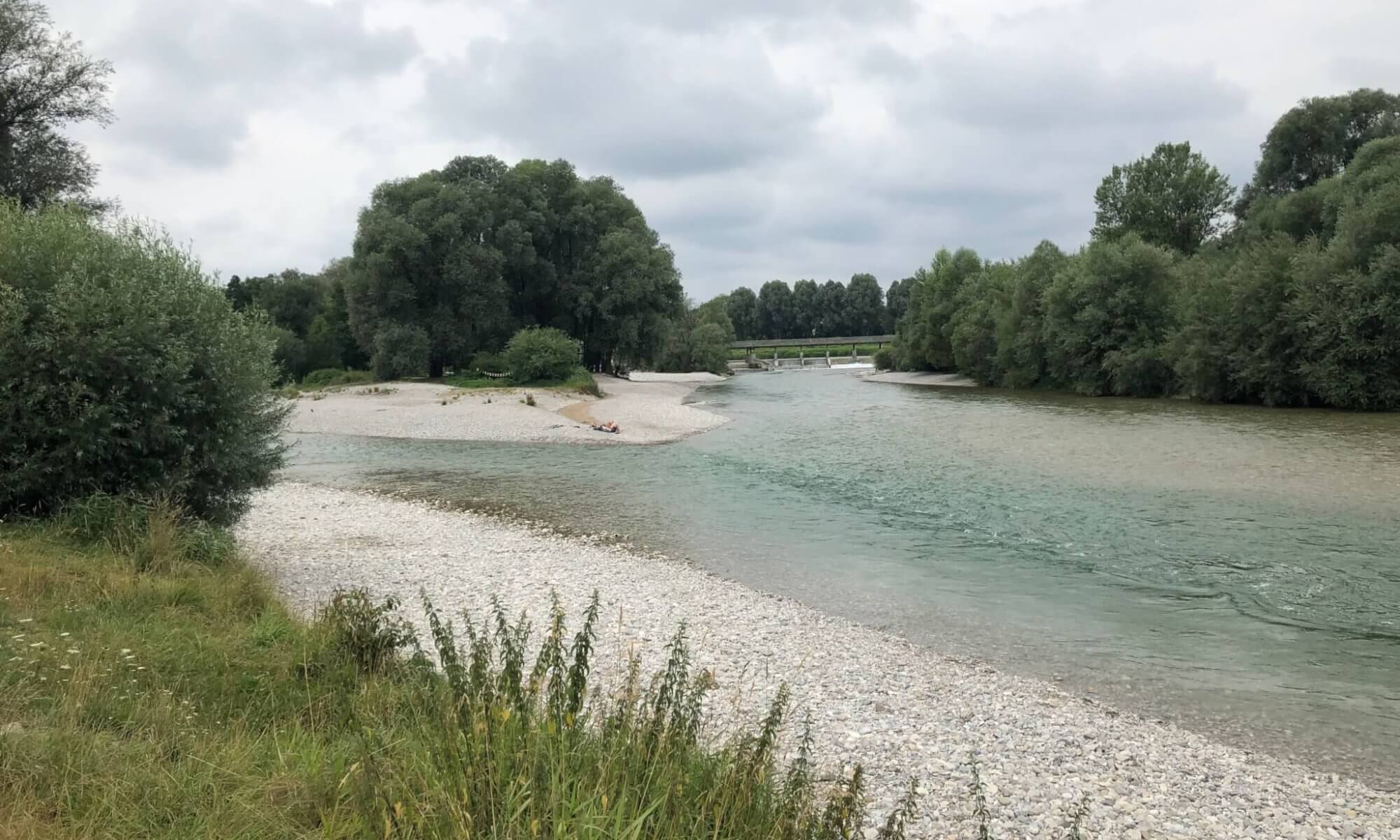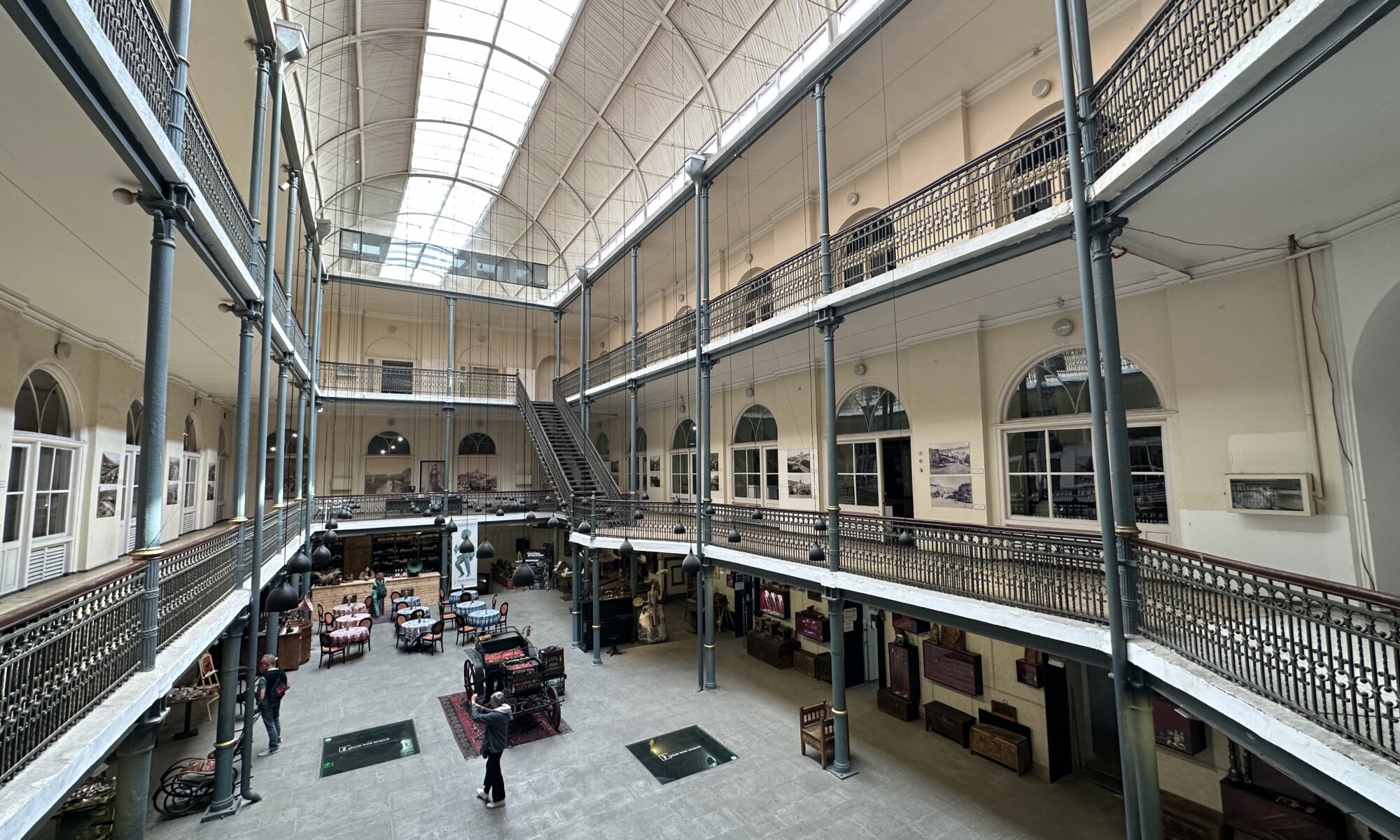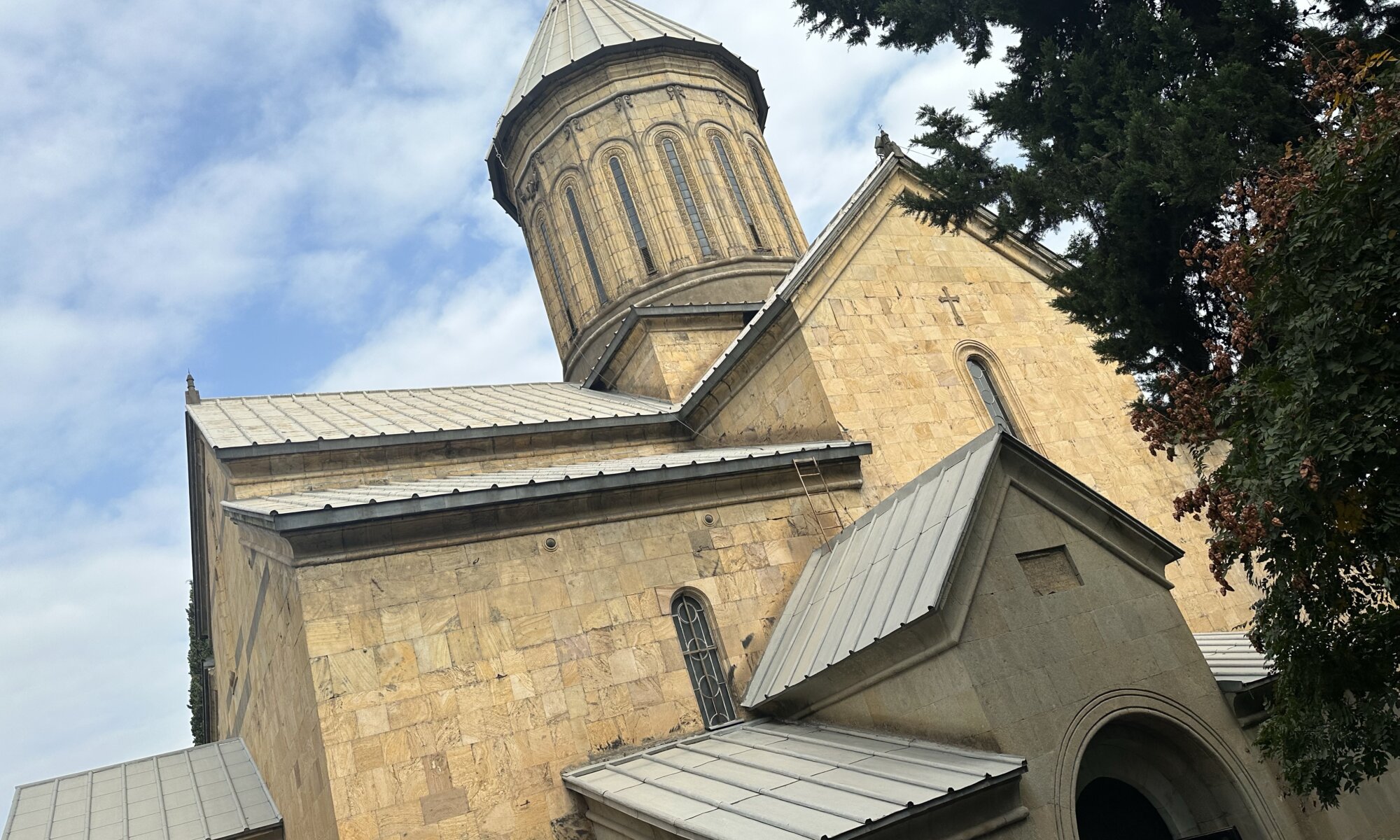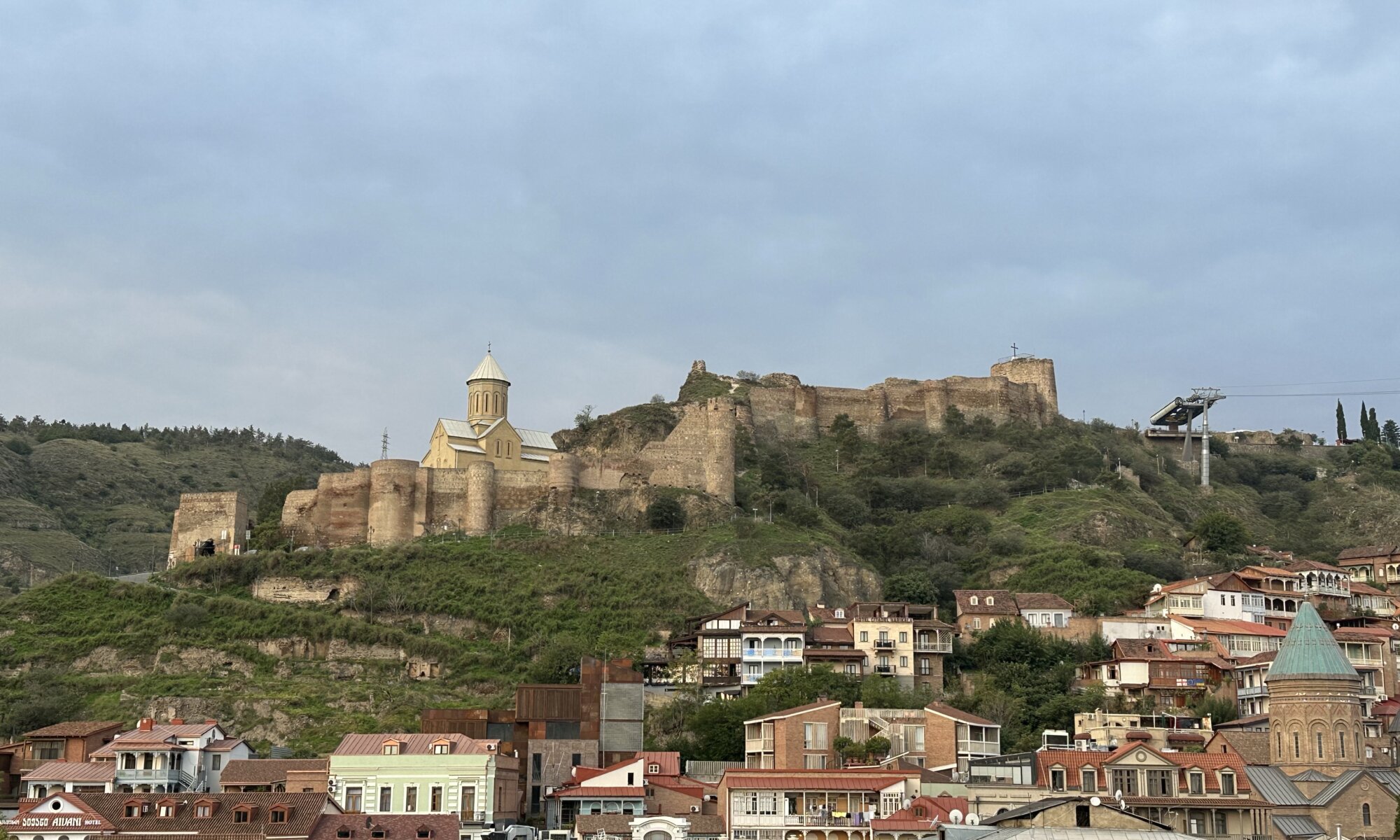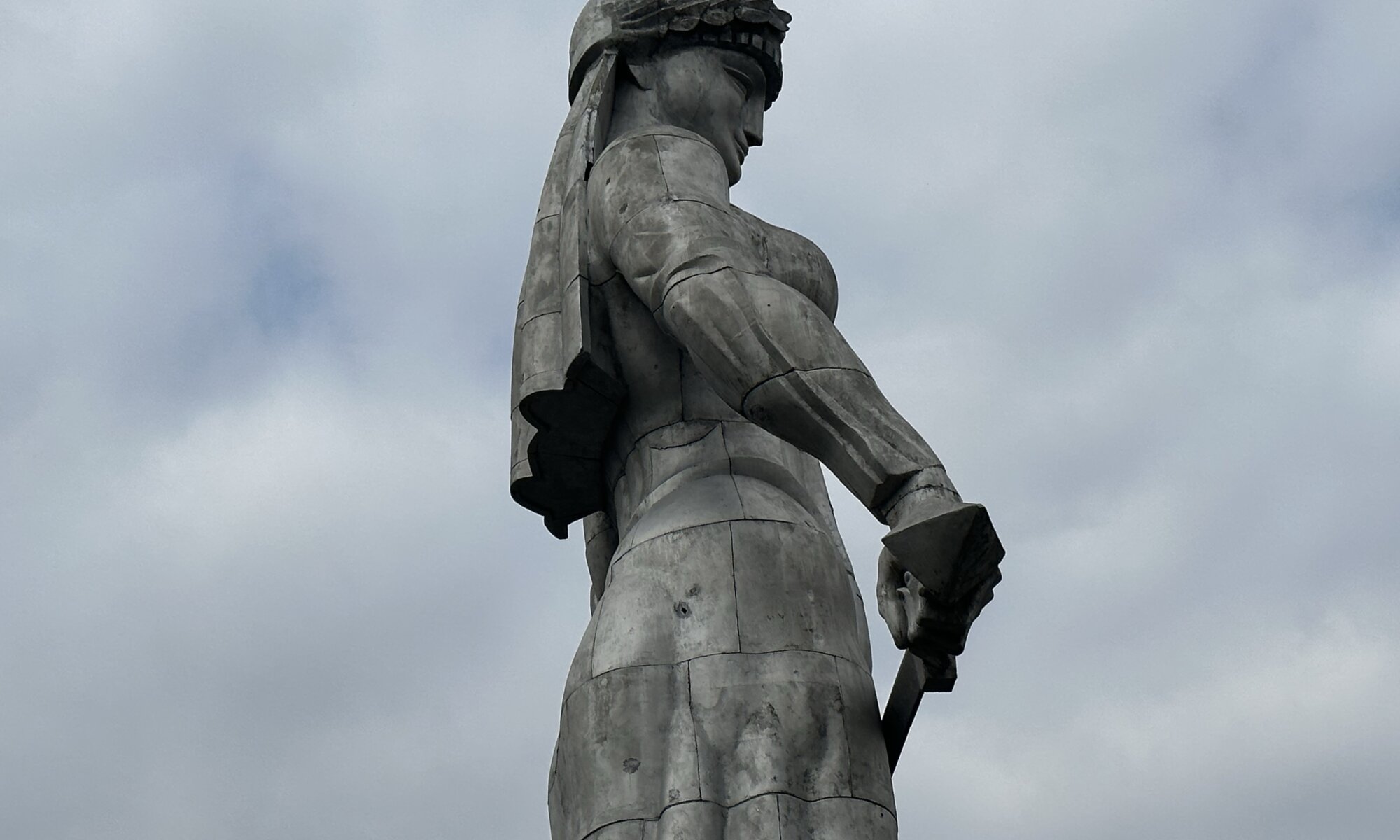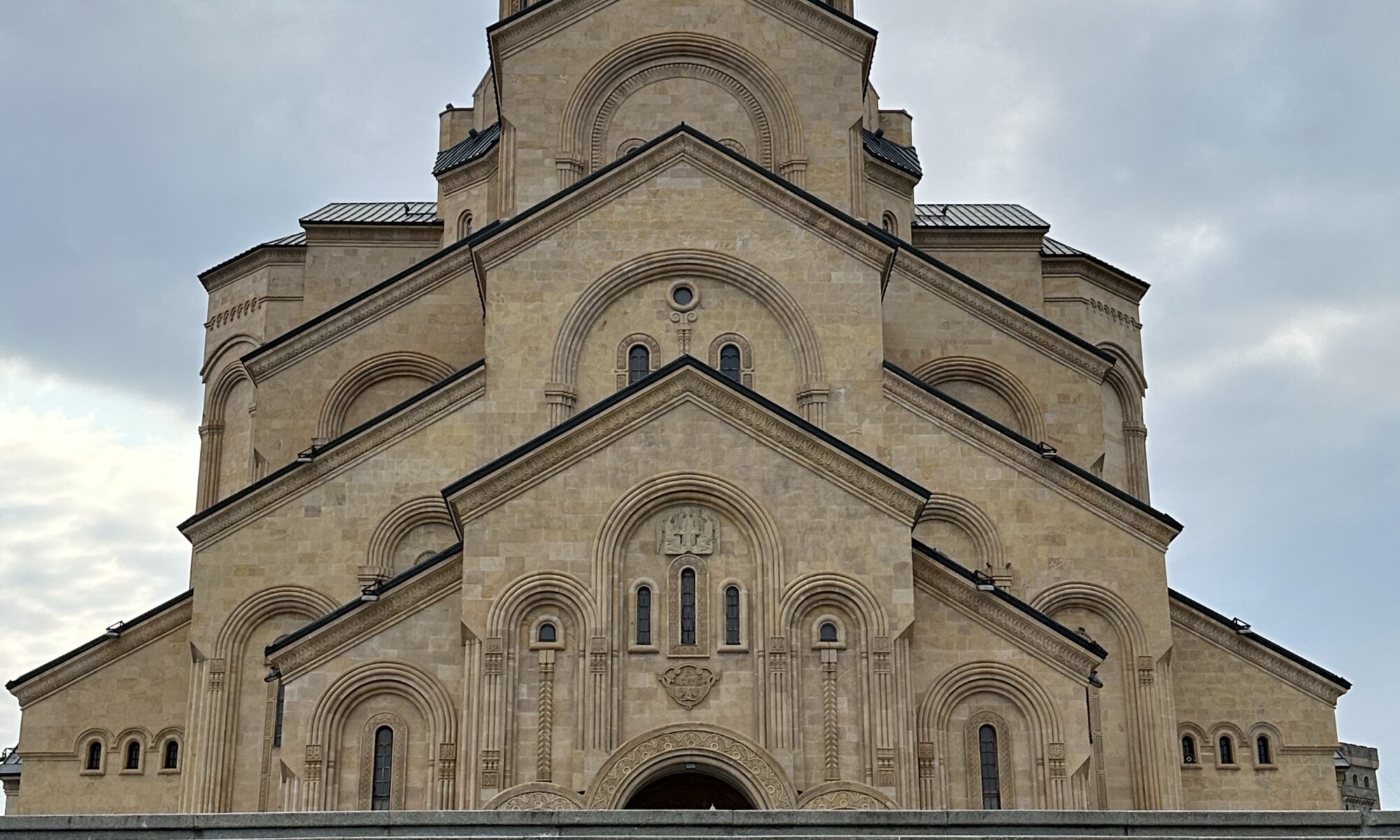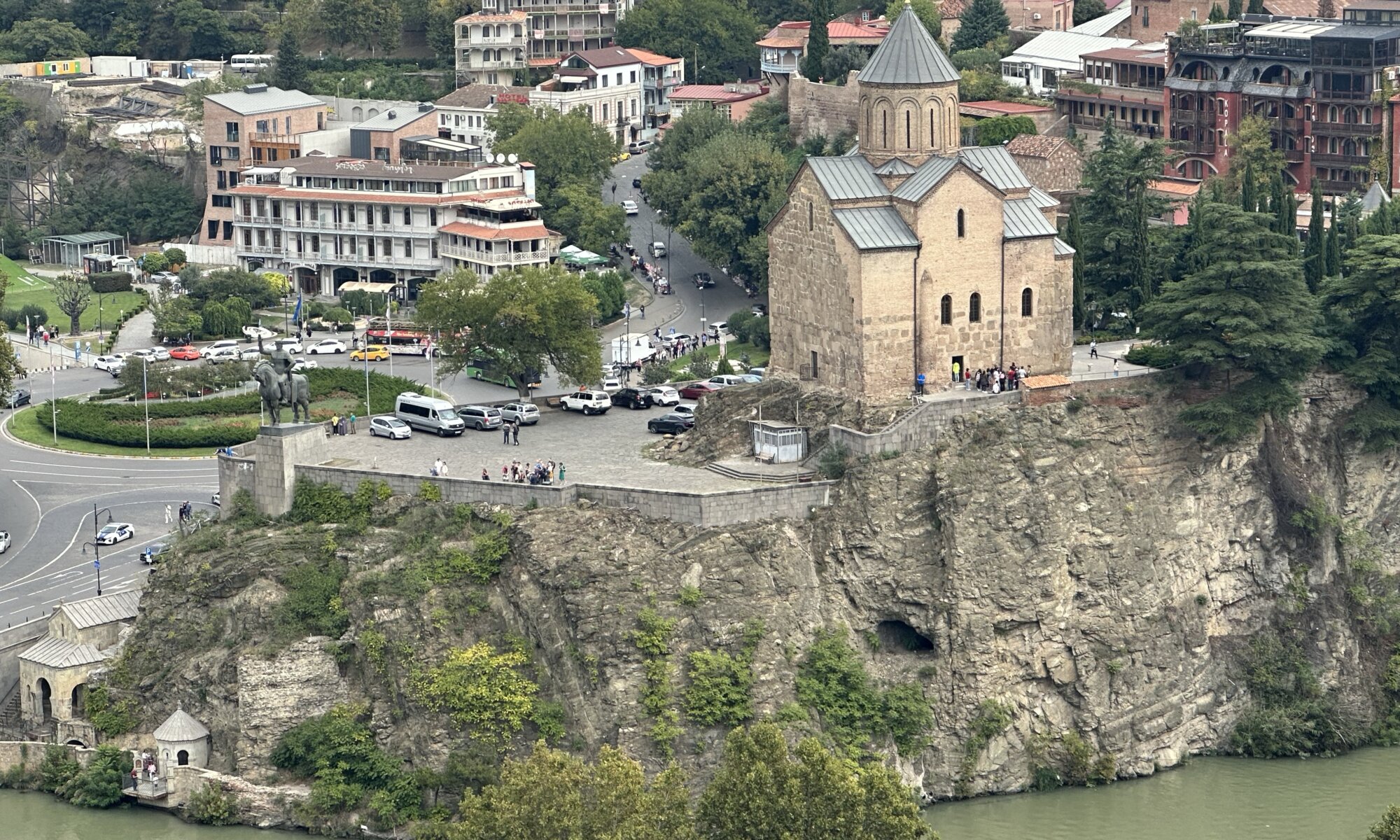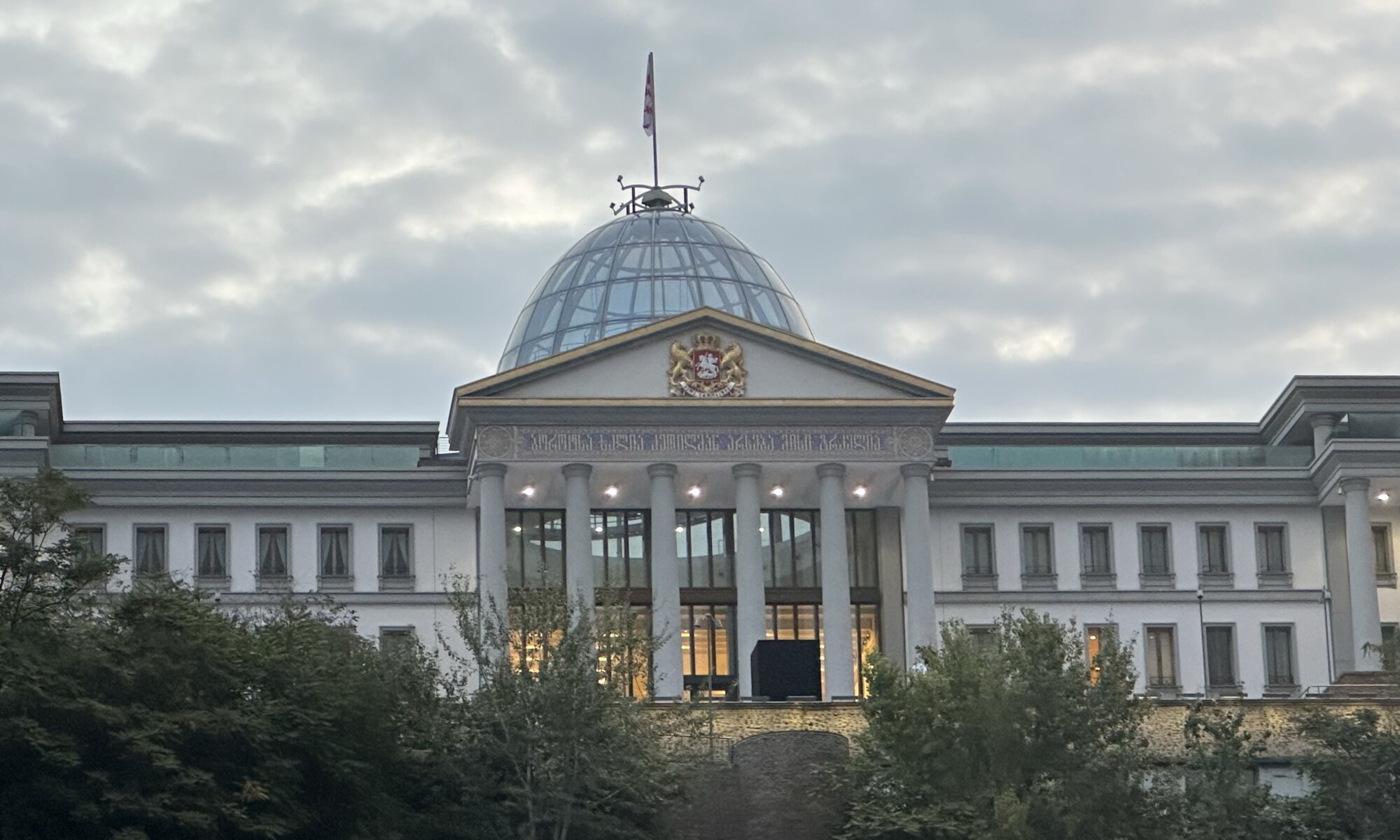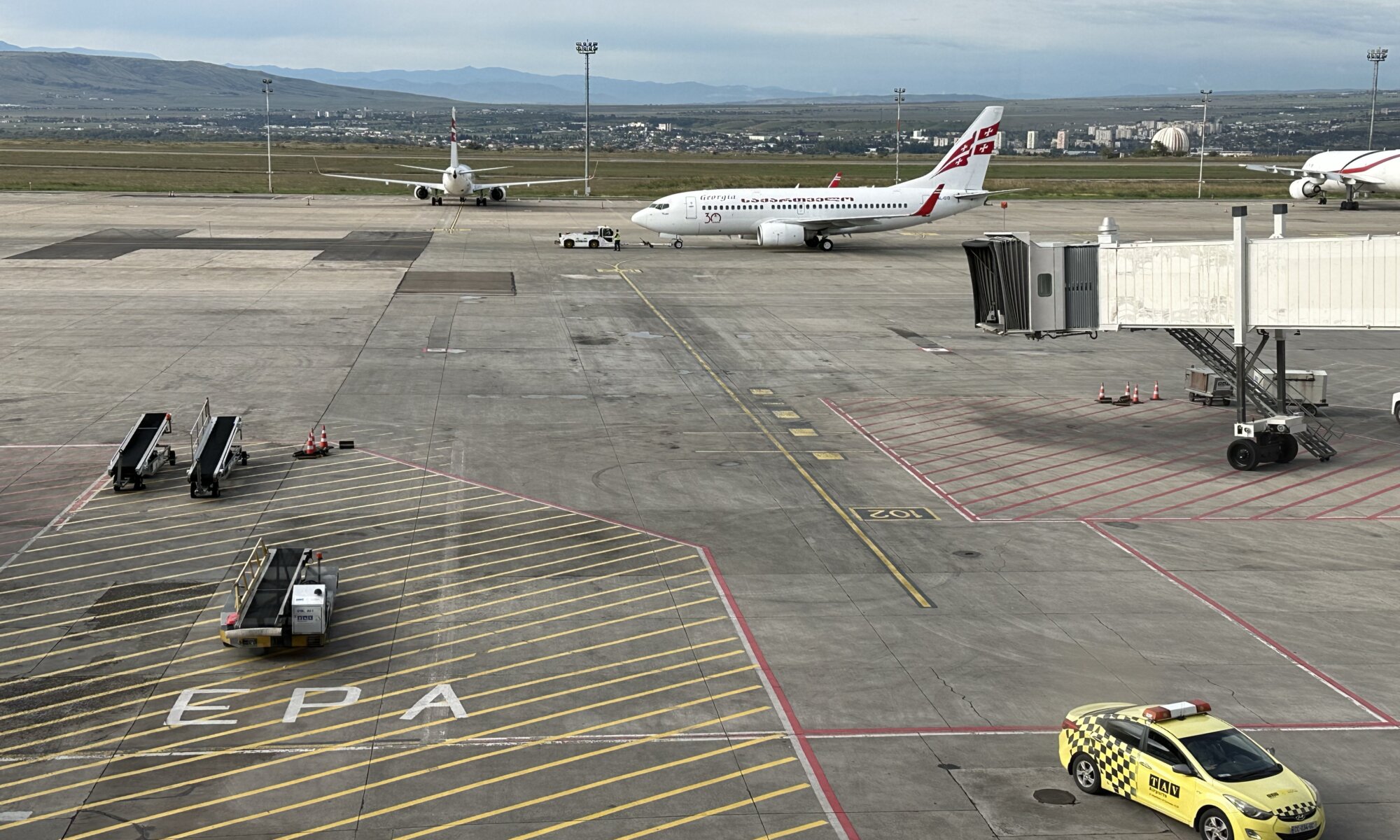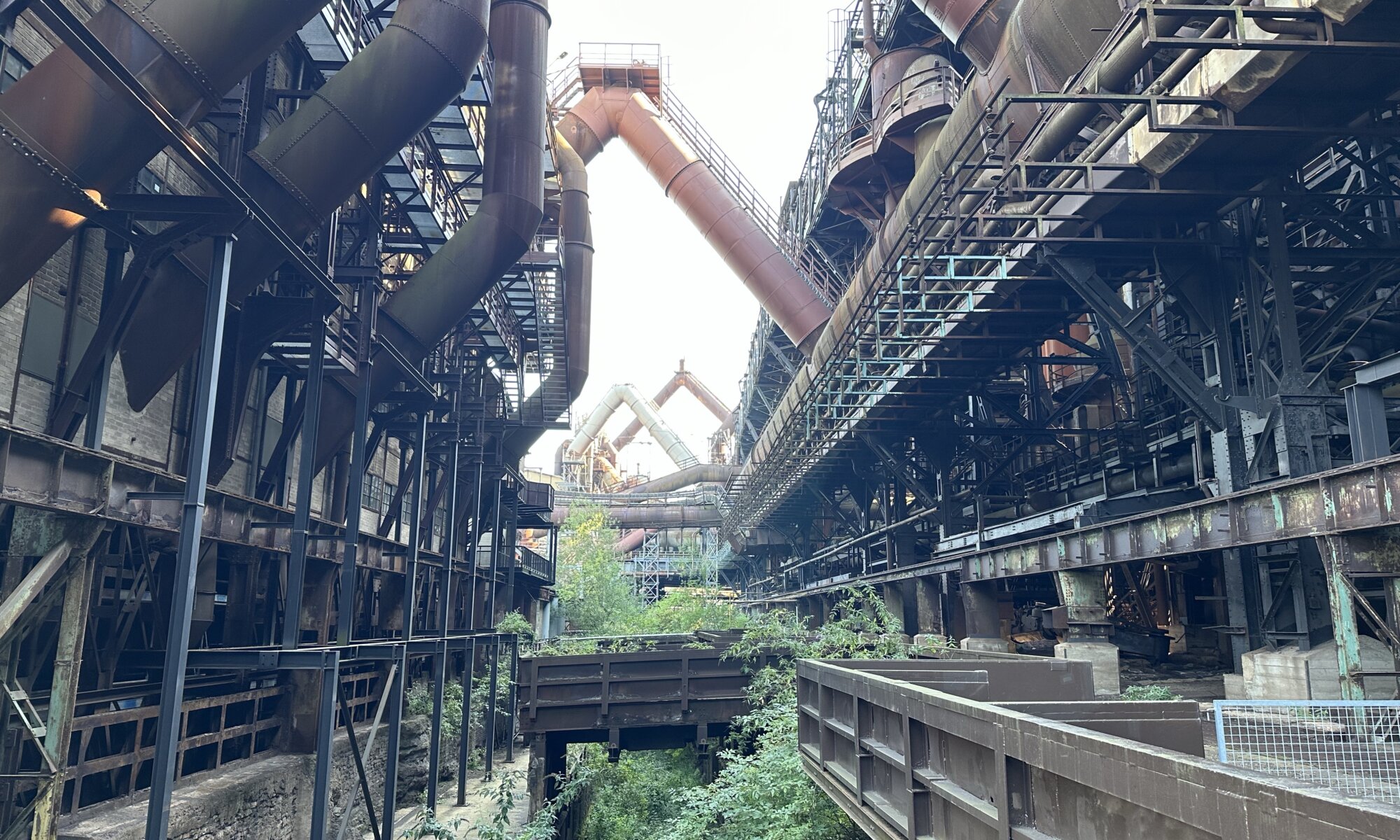The city history museum of თბილისი can be a nice place for visitors or a disappointment; that’s depending on your expectations. The building with an art nouveau facade dates back to the 19th century and copies the structures of an ancient caravanserai of the Silk Road. It contains the city history museum on the ground floor and a bar, a wine museum and some shops in the basement. I found the building itself to be really beautiful but the museum could really be extended. The city history museum is located on Sioni street next to the Sioni cathedral.
Continue reading “City history”Sioni
At the touristic center of თბილისი, next to the city history museum and river Mtkwari you can find the Sioni cathedral some meters below todays street level. It is a classic Orthodox church building like you can find them throughout all of Transcaucasia – but for the Georgian Christians it is the most important sacred place dating back to the year 575 CE. It is named after Mount Zion, the temple mount in Jerusalem.
Continue reading “Sioni”Nariqala
The city of თბილისი was one protected by the fortress Nariqala – which translates to ‘impregnable fortress’. It was created in the 4th century CE by the Persian Sassanids and was altered by Vakhtang I of Iberia as well as by Arabs, Mongols, Turkish and Persian forces. Today entering the fortress through its main gate might be a bit disappointing as the walls look pretty new and a modern style church is built within. Really impressive is the upper part of the fortress that is a citadel standing at three sides directly at the abyss.
Continue reading “Nariqala”Kartlis deda
Since 1958 a giant woman made of wood and covered in aluminum is standing high above the city of თბილისი. Kartlis deda, the mother of Georgia, symbolizes the city of Tbilisi and carries a bowl of wine for her friends in one hand and a sword for her enemies in the other. It was erected for the 1500th anniversary of the city and in 1997 it received an update: now holding her head up high and crowned with laurels. The monument reminded me much to the Mother Armenia at Երևան.
Continue reading “Kartlis deda”Sameba
The Sameba cathedral at თბილისი (also called Holy Trinity Cathedral) is a vast modern church in the city quarter Avlabari, located on Elias hill. It was built until 2004 and is the largest church building in Transcaucasia. The church itself is vast, but it is already special by its surroundings: the nine hectares large park around it, the stairs leading from the main gate to the church accompanied by columns showing Christian history. It consists of a campanile and nine chapels dedicated to saints, apostles and archangels. Most beautiful is the impressive mosaic behind the altar.
Continue reading “Sameba”Metechi
The historic center of თბილისი is a rock next to river Mtkwari and todays Europe square. On top you will find the Metechi church, an orthodox church from the 13th century surrounded by a nice garden with many pomegranate trees. While it is today standing alone on top of the rock it was formerly surrounded by the royal palace of თბილისი. The Russians converted the palace into a jail that was also used to incarcerate dictator Joseph Stalin (born at Gori close to Tbilisi). In 1937 the buildings were demolished leaving only the church in this location.
Continue reading “Metechi”Presidential palace
In 2003 the Revolution of Roses occurred at Georgia, removing president Eduard Shevardnadze and replacing him by the leader of the opposition, Mikheil Saakashvili. In the upcoming years Saakashvili successfully fought corruption and developed the country. He brought western architects to თბილისი and built modern elements like the Bridge of Peace, the Rike Concert Hall or the new presidential palace at Avlabari, high above river Mtkwari.
Continue reading “Presidential palace”თბილისის საერთაშორისო აეროპორტი
The international airport of თბილისი (TBS) is also the largest airport of Georgia. It has two runways and two terminals; it serves more than three million passengers every year. German passengers will see this airport only at night: Lufthansa lands here always at 4 am to be able to start again at 5 am and be back in central Europe for normal flight times after 9 am. That feels a bit odd, but the airport is fully operational at night.
Continue reading “თბილისის საერთაშორისო აეროპორტი”Wasserdorn
When you’re leaving the main railway station of Mannheim, Germany, to the northeast you’ll reach a nice park with fountains and flowers next to the city center. Main feature of this place is the Wasserturm (or Wasserdorn), an icon of the city. It was the first tower created to assure the water supply of the city and it was built from 1886 on. The tower is 60 meters high and was used until the year 2000 (at least as a reserve).
Continue reading “Wasserdorn”Völklinger Hütte
If you’re interested in industrial heritage you need to visit the Saarland, close to France and Luxembourg. At Völklingen, west of the capital city Saarbrücken, you can discover the historic iron works Völklinger Hütte – an impressive UNESCO world heritage site. It was founded in 1873 and produced iron using continuously improved techniques until 1986. Many parts like the Eisenschrägaufzug (transporting the iron 27 meters up into the melting ovens) date back to the 1910s. And already when you’re standing at the railway station of Völklingen you’re overwhelmed by the vast size of this former factory.
Continue reading “Völklinger Hütte”